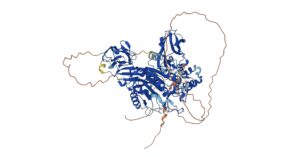We are big fans of the American Society of Hematology (ASH) annual meeting, it certainly is the global meeting for hematology! The quality of research presented is very high; it’s where you see groundbreaking and practice changing hematology data, sometimes from unexpected sources.
Last year brought us long lines, crowded escalators, and jam packed halls, especially for the niche sessions. It’s hard to imagine any of these in pandemic these days, especially if someone were to start suddenly coughing and sneezing in the seat behind…

A bit of nostalgia from ASH19: Up close and personal
Will we all be together again for #ASH21? According to virology experts, we’ll need 70% of people (around the world, not just in one country!) to have had a COVID-19 vaccine before we can lower our masks and do away with social distancing.
Even if 70% of health care professionals are vaccinated, a not unrealistic figure if you look at the flu vaccine uptake, going to an in-person meeting means you still have to navigate the cumulative risk associated with airports, flights, hotels, ground transportation, plus eating out in an urban environment where the very visible inequality that exists in America means it is highly unlikely everyone you may come into contact with, directly or indirectly, will be vaccinated.
There’s also the uncertainty of how durable any vaccination is, raising the prospect that any COVID-19 vaccination is unlikely to be “once and done” – will we all need boosts six months later? The logistics for all of this are just mind blowing.
Despite the exhortations from ASH leadership that they look forward to seeing us in Georgia next year at #ASH21 and we should all plan to be there, as things stand we don’t recommend booking your flights to Atlanta and #ASH21 just yet.
BSB expects 2021 to be another year of virtual meetings!
Meanwhile, on with the business of exploring the emerging data from ASH 20.
In this latest post, we are highlighting a few of the presentations that caught our attention on the various bispecific antibodies and T cell engagers in advanced lymphomas and multiple myeloma…
To learn more from our oncology analysis and get a heads up on the latest insights and commentary pertaining to the ASH meeting — including our daily highlights coverage, subscribers can log-in or you can click to gain access to BSB Premium Content.
This content is restricted to subscribers



 The landscape in various lymphoma subsets has changed in ways many may not have expected a decade or so ago and will continue to evolve further as new treatments against novel targets start to show their true colours.
The landscape in various lymphoma subsets has changed in ways many may not have expected a decade or so ago and will continue to evolve further as new treatments against novel targets start to show their true colours.




